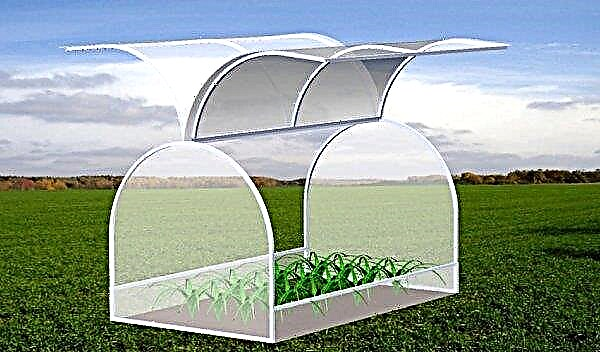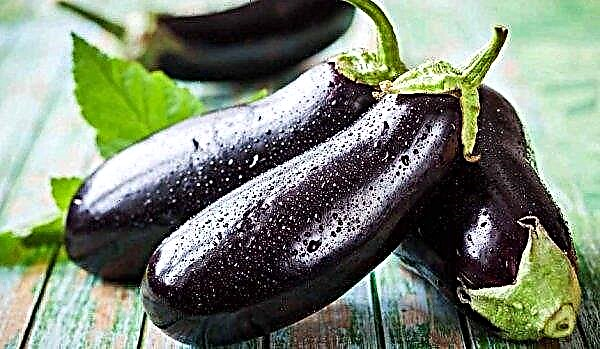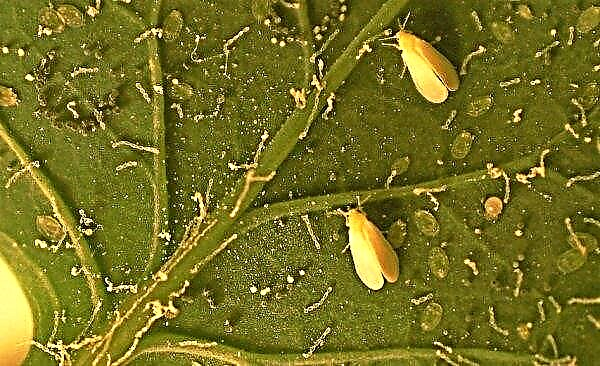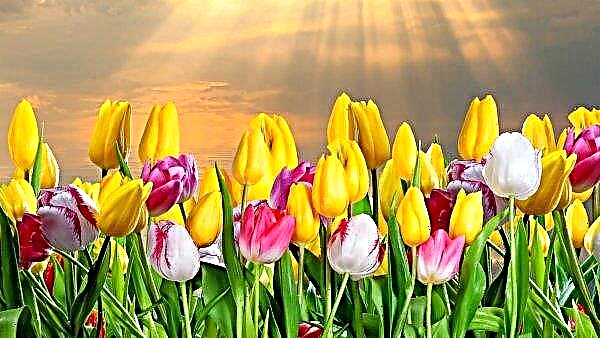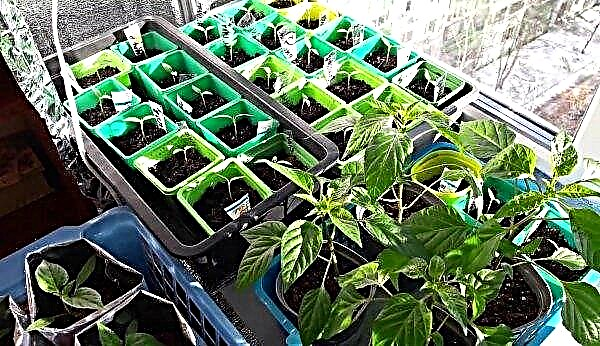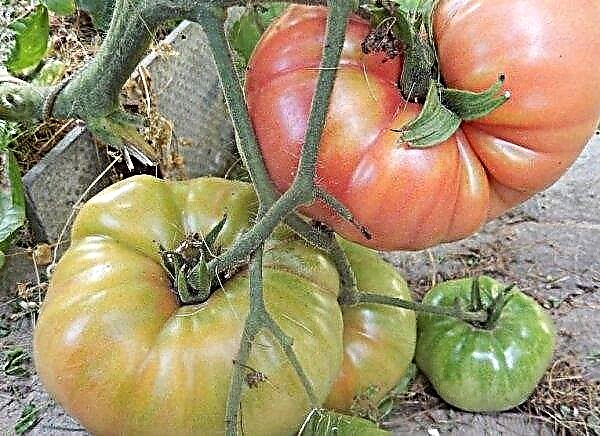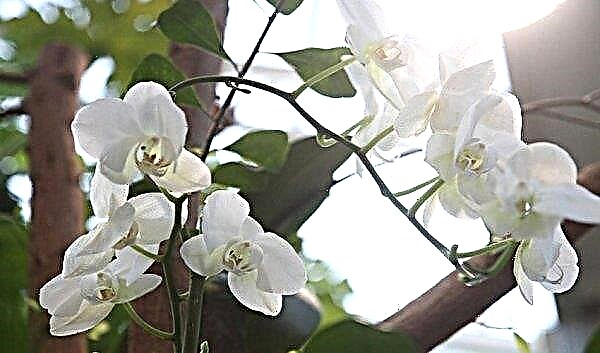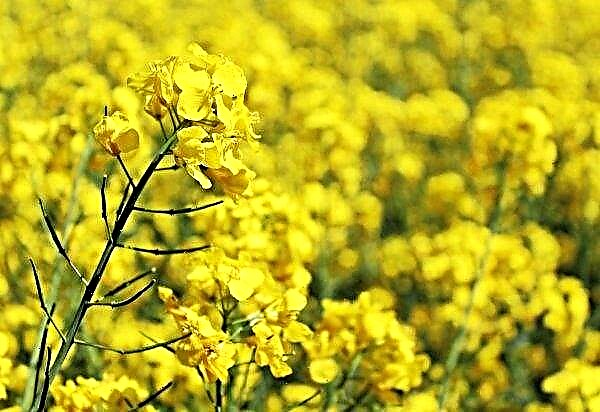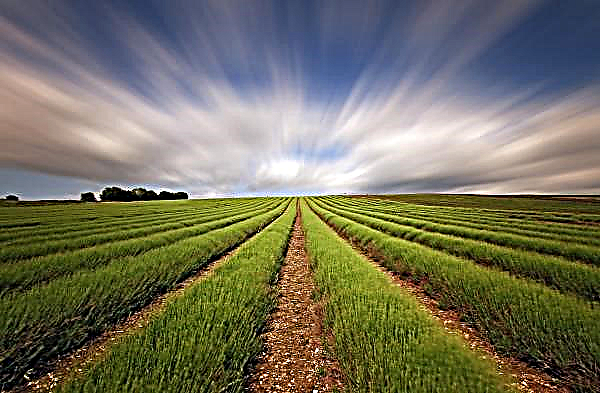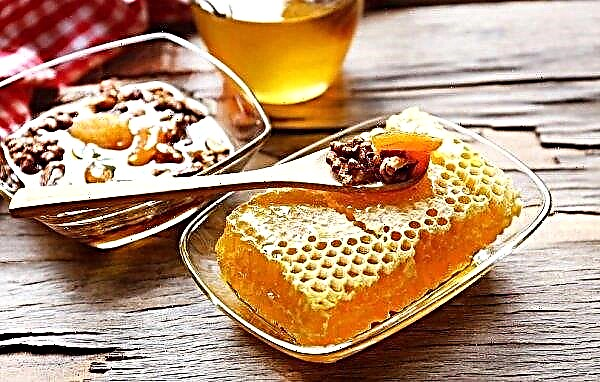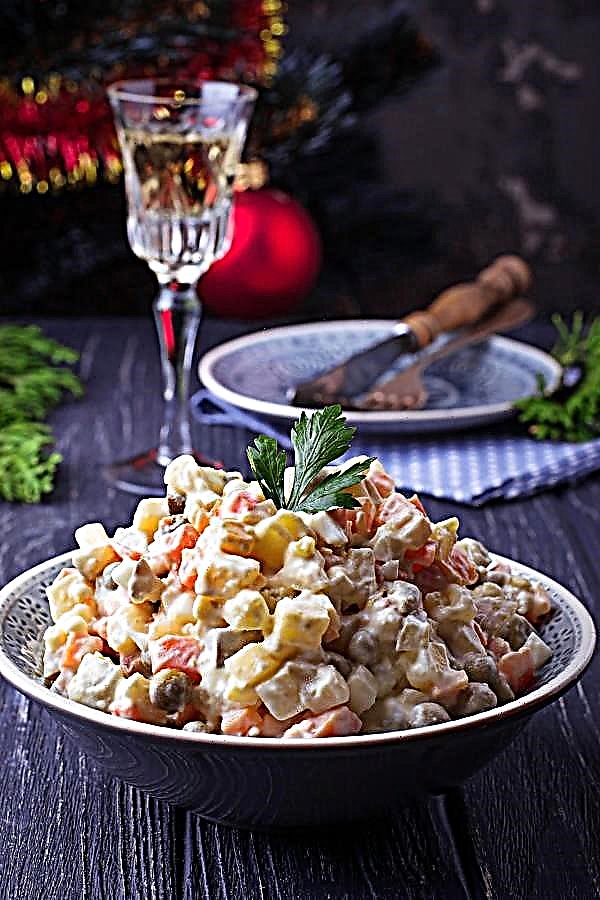Among the first blossoming spring flowers, hyacinth is most noticeable. It strikes with an abundance of color and pleases the eye. This versatile crop is suitable for both outdoor cultivation and distillation. Details about the features of cultivation - later in the article.
When to plant hyacinth bulbs
Planting hyacinths, like most bulbs, is carried out either in spring or in autumn. The second option is preferable.
Fall
When autumn landing, the following rules apply:
- place the bulbs in the ground before the onset of cooling, so that they have time to root;
- planting dates are important for the reason that early planting is fraught with active growth, and plants may die during the first frosts. If the terms are too late, the bulbs do not have time to take root and can also disappear with frost;
- in a temperate climate, landing is in the second half of September or early October;
- in the main part of the regions it was customary to plant no later than mid-October. This is due to the fact that it takes about 3-5 weeks to root, and soil freezing occurs around November 5-10;
- gardeners practice late planting (in November). In this case, the area with hyacinths should be insulated with leaves or other covering material before planting, so that the ground does not freeze. After landing, the territory needs to be covered again;
- for the winter, the planted bulbs should be mulched with peat, spruce branches, foliage or other suitable material;
- planting material can be planted in 3 stages. This will make it possible to have a longer flowering period in spring. Such a technique will also help to save most of the bulbs in the event that not all of the planting dates are successful;
- bulbs intended for forcing (grown indoors) should be placed in the soil, focusing on the desired period of receiving flowers. To get blooming hyacinths for the New Year holidays, you need to plant in mid-September, and by March 8 - in early November.
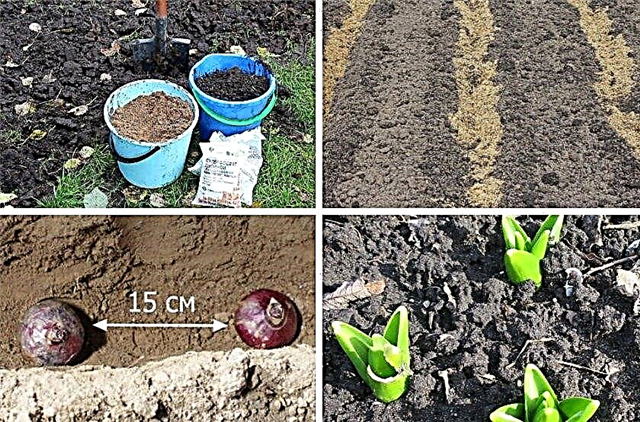
In the spring
You can plant plants in the spring.
In this case, you need to take into account some subtleties:
- after the snow melts, when the ground thaws and warms up to + 5 ... + 8 ° C, you can already plant the bulbs;
- in the main part of the regions, the optimal landing dates are in the 2nd-3rd decade of April;
- spring planting involves placing bulbs in a sand pillow. About 3 cm of river sand should be poured into the bottom of the hole and lightly pressed into the seed material, then sprinkled with soil;
- in order to get flowering this year, in pre-planting events, you need to add the placement of bulbs in the freezer for 40 minutes.
Video: Planting Hyacinths
How to grow hyacinth from seeds
The main method of cultivation is onion, but sometimes flower growers practice seed propagation. Most often, this happens if you want to experiment in breeding new varieties, and in amateur breeding this is impractical, since flowering in such specimens begins only in the 6th year.
Seed cultivation provides the following conditions:
- seed harvesting is carried out from unopened boxes of light yellow color, which after collection must be dried and stored in paper bags;
- The best time for sowing is the end of September. In this case, seedlings will appear in the spring of next year;
- Seedlings can be grown in any capacity, or in the garden;
- a suitable substrate for planting may be a mixture of equal volumes of peat, turf and sand;
- the sowing depth should not exceed 1.5 cm. If sown deeper - the seed may not hatch and not rise;
- seeds sown in containers need a period of vernalization. To do this, leave the containers to winter in a cool place;
- in open areas of the bed with crops, sprinkle 20 cm of compost, mulch, leaves or other material;
- seedlings germinated after 4-5 months need to be provided with watering and adequate lighting;
- the first year young bulbs winter in the ground. They should be covered with a layer of mulch. In the summer they already need to be dug up and stored until planting;
- plants grown in containers must be transplanted only after 2 years. The best place for wintering for them may be a cold greenhouse.

Planting hyacinth
Proper planting of hyacinths provides for some nuances that you need to know about to obtain optimal results in the cultivation of this crop. The following describes the preparation of the bulbs, the capacity for planting and suitable soil.
How to choose the right bulb
The first condition for obtaining a beautifully flowering plant is the correct selection of planting material.
Important! Bulbs are considered the most suitable for planting, in which the ratio of the diameter of the bottom and the bulb is 1: 1.5.
It must meet certain requirements:
- have a healthy look;
- there should be no damage, spotting or the presence of diseases;
- bulbs must be ripe, that is, be stored for long periods;
- larger bulbs are for distillation, and medium-sized planting material (flowerbed) is for planting in flower beds;
- heavy bulbs with a diameter of at least 6 cm are optimal for forcing.

For distillation, special varieties are used. The most popular among them are the early ones - Bismarck, General, Jan Bos, and the later varieties - Victoire, Madame Sophie, City of Harlem and others.
Did you know? The first hyacinths appeared in Europe due to the wreck of the ship that transported this product. Bulbs thrown ashore were spotted by the local population and used for planting.
Pot preparation
Large containers are not used for distillation. The container must accommodate the bulb itself, and so that about 1–1.5 cm remains to the container edge. For group plantings, spaces between 1–1.5 cm should also be left between the bulbs and the pot edge. As for the shape, the most common are flat pots.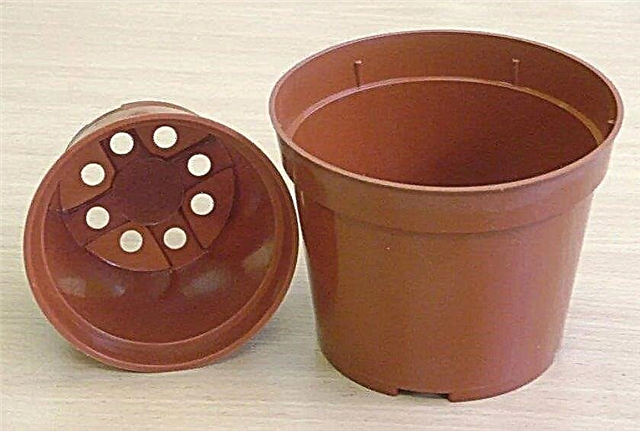
Preparation of soil for landing for distillation
There are no special requirements to the soil for distillation, since the necessary nutritional reserves are already contained in the bulb itself. Nutrient mixtures are needed to grow small bulbs, but not for distillation. Hyacinths can be expelled on any substrate - for example, on sand, peat, garden soil or even in water. You can also buy a ready-made substrate for planting, or independently make a mixture of turf, humus and coarse sand in equal proportions.
Further actions consist of several stages:
- Pour a 3 cm sand drainage layer into the tank, pour the soil mixture on top (about 5 cm).
- Place the bulbs, squeezing a little.
- Sprinkle first with sand (up to 1 cm), and then with soil substrate. About 1/2 or 1/3 of the bulb should remain above the ground.
- Planting a little water.
- For rooting, flowers need to be transferred to a humid and cool room (temperature not higher than + 7 ° C) and maintained for about 2-3 months.
- Soil should be watered periodically, not allowing complete drying out.
- After the sprouts grow to 2-3 cm, the containers must be moved to a dark, but warmer (up to + 12 ° C) room for several days.
- Move to a bright and warm place.

The technology of planting crops in open ground is not very different. Its algorithm is as follows:
- In autumn, humus (10 kg), wood ash (0.5 kg), superphosphate (50 g) and potassium sulfate (20 g) should be added to the garden per 1 m².
- Pour sand (about 2-3 cm) into the prepared wells, providing drainage.
- Place the bulbs in the pits, slightly pressing. Sprinkle on top with sand, and then with soil substrate.
- Water the planting and mulch.
Important! The depth of embedment depends on the diameter of the planting material. If its dimensions exceed 5 cm, it is necessary to plant to a depth of 18 cm, and smaller ones — 15 cm. Spacing between plants — 10-15 cm.
Hyacinth Care
Proper care of the flower after planting will ensure rapid flowering and the formation of a full-fledged bulb. In general, the requirements for hyacinth are the same as for other flowering plants, so it will not create special problems, but still it needs to be paid attention.
Lighting
Hyacinths need to provide good lighting. Subject to this condition, quality flowering is guaranteed. On shaded areas from a lack of sunlight, the flowers will be smaller. When distilling on a windowsill, they must be shaded from direct sunlight at lunchtime.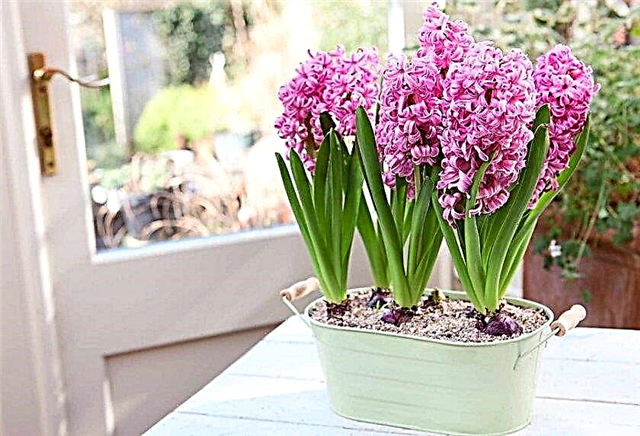
Watering
For its love of moisture, hyacinth is called the flower of the rain, so it is demanding on sufficient moisture. On dry flower beds, it should be watered so that the soil is saturated to a depth of 15–20 cm. For potted specimens, watering should be more frequent. It is carried out as the upper ball of soil dries, preventing its complete drying.
Fertilizer and fertilizer
For hyacinths growing in open areas for the season, 3 top dressings are enough:
- The first should be given at the beginning of growth. For it, about 20 g of ammonium nitrate and 15–20 g of superphosphate are consumed per 1 m².
- The second must be introduced during the formation of the buds. It should consist of 30 g of superphosphate and 20 potassium sulfate.
- At the end of flowering, it is necessary to give the last top dressing in the form of 30 g of superphosphate and 30 g of potassium sulfate.
 After top dressing, the soil should be well watered and loosened.
After top dressing, the soil should be well watered and loosened.Temperature and humidity
After buying the distillation of hyacinth and placing it on the windowsill, its flowering period is short-lived. Very often, flower stalks also stretch and break under their own weight. To avoid this, it is better to move the pots to a cooler place. A suitable option could be a glazed loggia or balcony. So that the plant does not deplete before planting in the ground, transplantation to a more spacious tank will help.
Did you know? There are many legends about hyacinth. One of them says that the flower appeared from the spilled blood of the Spartan prince Hyacinth, who was accidentally killed by the god Apollo.
When to Dig Hyacinths
For hyacinths to continue to bloom annually, they need to be dug up. If this is not done, then next year their flowering will be much worse. Therefore, after flowering, when the leaves turn yellow, the bulbs should be removed from the soil. The most suitable period is the end of June or the beginning of July. Dug bulbs should be washed in a weak solution of manganese, dried and stored.
Diseases, pests and how to deal with them
Affected plants lag behind in growth, do not bloom well or do not bloom at all, so you need to immediately eliminate such problems. To do this, first of all, you need to be able to distinguish between the symptoms of various ailments.
Disease
The most common diseases are the following:
- Yellow bacterial rot characterized by the appearance of mucous areas with an unpleasant odor. During the growing season, symptoms may include the appearance of streakiness and spotting on the leaves and peduncles, as well as growth retardation. It is better to destroy such bulbs, and treat the holes with 5% formalin.

- Mosaic virus causes spots and strokes of light green on the foliage. Later, these areas turn yellow and die. There is also a whitish spotting on the peduncle. The bottom of the inflorescences is often underdeveloped, and the plants lag behind in growth. The fight against this disease is useless. Plants should be destroyed.
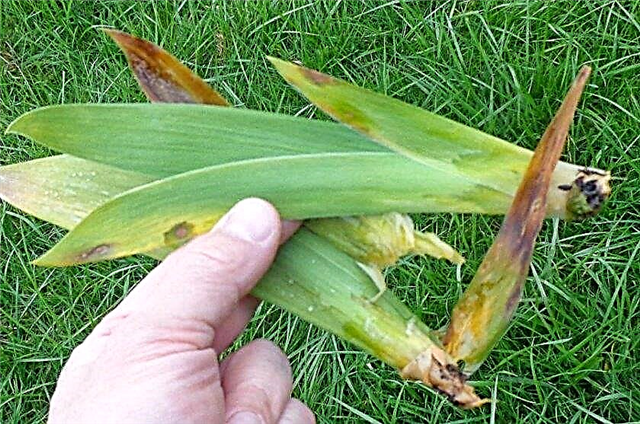
- At penicillin rot all aerial parts of the plant are covered with a green coating of fungal sporulation. To prevent the disease, you need to maintain the room temperature around + 9 ° C, and in greenhouses - + 23 ... + 25 ° C, and spray with copper-containing preparations according to the instructions.

Harmful insects
Hyacinths can suffer greatly from various insects:
- Flower fly larvae often flake scales and the bottom of the bulbs. In such specimens, development slows down and the leaves wither. Processing such drugs as Aktara, Medvetoks or Tabazol will help to avoid such problems, according to the annotation.
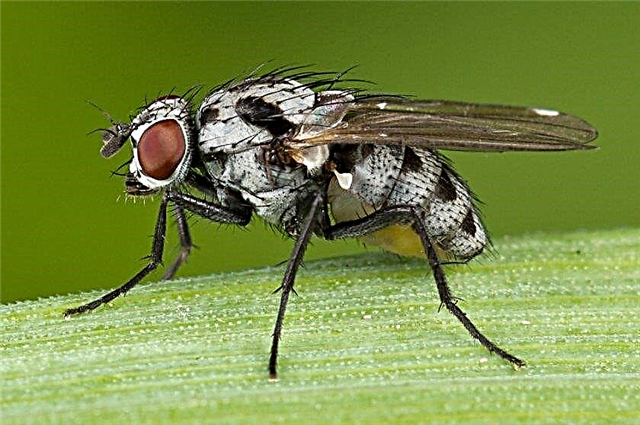
- Aphids and thrips suck the juice from plants. In the future, this causes yellowing of leaves and falling flowers and buds. The fight consists in spraying “Fitoverm”, “Akarin”, “Accord” or other similar drug.

- Hyacinth can damage and the little bears. If the moves of these individuals are detected, one of the preparations should be processed: Boverin, Medvetoks, or Medvetsid.
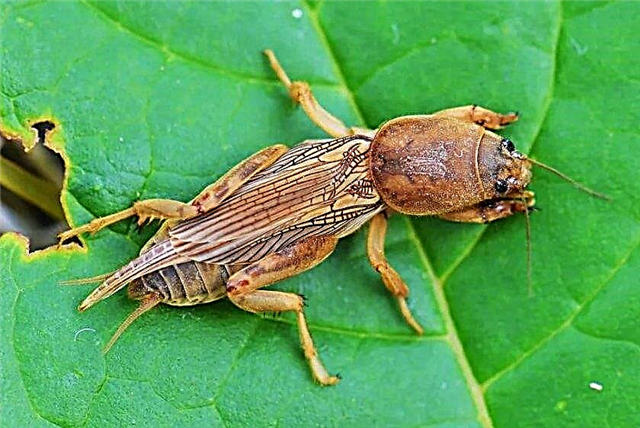
How to transplant hyacinth
Like most plants, hyacinths need a transplant. Immediately after buying a distillation hyacinth, it is advisable to move it to a large container. Before that, he should adapt a little to home conditions for about a week and a half.
After selecting the pot and preparing the mixture (how to do this, as indicated earlier in the article), you can proceed with the transplant:
- After removing the bulb, you need to inspect it. If damaged, they should be sprinkled with activated carbon.
- You can remove the upper husk and carry out the treatment with a growth stimulator.
- Deepen the bulb to the root neck.
- Place the plant in a cool room and periodically water it.
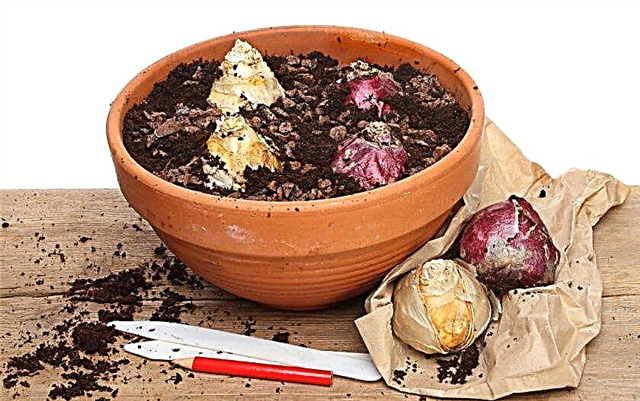
Purchased hyacinths can not be moved to pots, but to flower beds. Autumn is considered the best time, but you can transplant in the spring. The planting algorithm was given earlier in the text. The article has already mentioned the annual digging and transplantation of hyacinth bulbs.
How long the flowers bloom
Hyacinths can bloom only for a short time (from a week to two). But some gardeners extend this period to 3, and sometimes 4 weeks. This can be achieved if the plants are kept in a cool room (with a temperature not exceeding + 10 ... + 12 ° C).
How hyacinths winter
Before the onset of persistent cooling, the area with hyacinths should be covered with a layer of dry foliage, sawdust, peat or humus. This is necessary to prevent freezing of the soil and the death of bulbs. In the spring, you need to remove the shelter on time (as soon as the soil begins to thaw), since hyacinths germinate early.

Now you know how to grow hyacinths. If you plant hyacinth correctly and care for it, it will delight for many years with early and abundant flowering. This plant is able to bloom anywhere, whether it is a flower garden, window sill or balcony.







